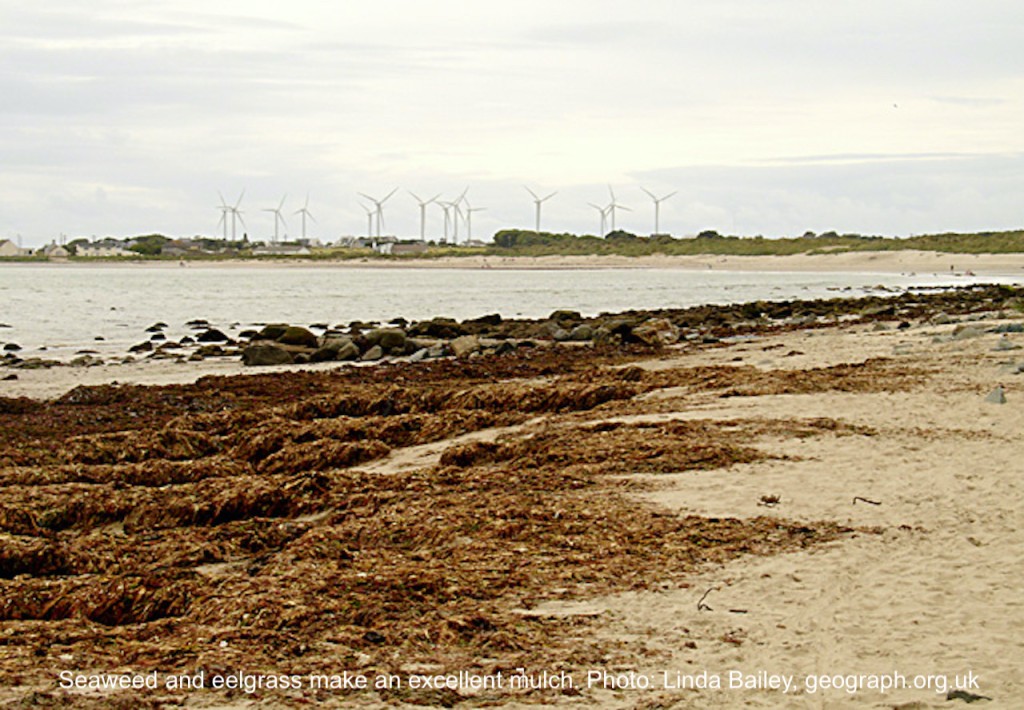By Larry Hodgson
Question: I live in the Magdalen Islands. This year, I prepared my first vegetable garden. At the bottom of the beach near where I live, there is a lot of dried seaweed, especially eelgrass. It’s been there for a long time and I’m assuming it is therefore partially desalinated. I’d like to know the strengths and weaknesses of using it as a soil amendment. Can it also be used as a mulch? Is it going to too acidic or alkaline?
Antonin Arseneau,
Magdalen Islands
Answer: Seaweed, composed of both algae and marine plants (eelgrass [Zostera marina], for example, is actually not an algae, but an aquatic flowering plant) makes an excellent mulch and an equally good soil amendment.
In seaside gardens where it is readily available, it is popularly used to mulch vegetable beds where, in addition to moderating the temperature of the soil, reducing water loss due to evaporation and preventing the germination of weeds, it enriches the soil in nitrogen, potassium, magnesium, calcium and several trace elements. Seaweed mulch is also said to repel slugs, although that doesn’t always seem to work (results might depend on the types of algae and marine plants that make up the mulch). You can apply a layer of 3 to 4 inches (7.5 to 10 cm) of seaweed as mulch over the soil throughout the vegetable garden. And you can also use it as a mulch in a flower border, at the base of trees and, essentially, anywhere you would use an organic mulch.
As to using seaweed as a soil amendment, you can mix in 1 inch or even 2 inches (2 to 5 cm) of seaweed into garden soil like just as you would compost or manure. Seaweed will help to enrich the soil in minerals. After all, generations of gardeners have been purchasing concentrated seaweed fertilizer! It also helps lighten heavy soils while allowing thin soils to better retain to water and minerals.
Also, when you’re able to harvest enough seaweed locally, it makes a great addition to your compost pile.
Using Seaweed in the Garden
As you suggest, seaweed that has been exposed on land for a while will have been rinsed enough of salt to be readily useable in the garden, but you could still use fairly fresh seaweed too by letting it undergo a few sessions of rain or by rinsing it with water from the garden hose before using it. Unless the local soil is already saline, any residual salts shouldn’t cause any problem: they’ll be diluted and leached away as you water your garden.
As for acidity and alkalinity, usually seaweed is neutral or slightly alkaline (a pH of 7 or slightly above). Indeed, in areas where the soil is highly acid, seaweed is sometimes incorporated in large quantities to reduce their alkalinity. Still, the alkalinizing effect of seaweed is very weak. There is no risk of substantially altering the pH of typical garden soil (usually in the 6 to 7 pH range) by incorporating seaweed at normal rates, unless, of course, the soil is already too alkaline (a pH of well over 7).
It goes without saying that you should only use seaweed carried on shore by waves and certainly not harvest it from the sea so as not to upset the often fragile ecological balance of the seabed.

